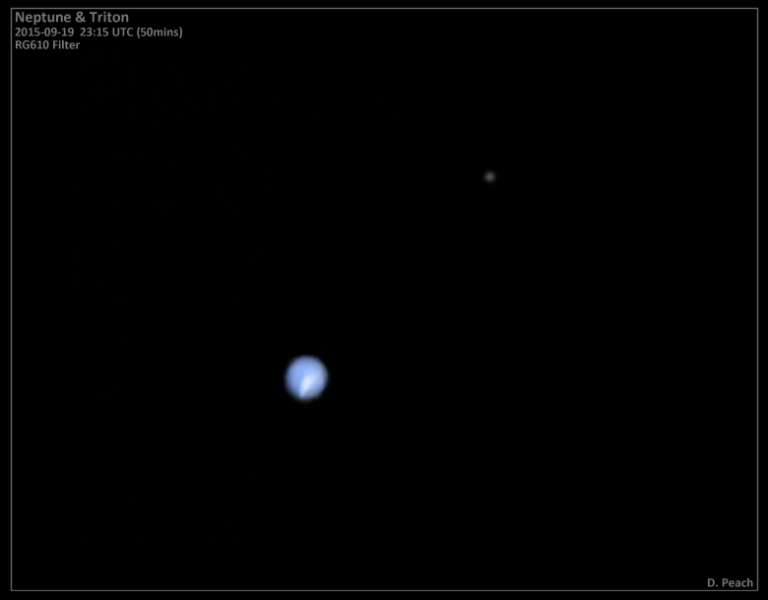Emily Lakdawalla • Sep 22, 2015
Checking in on Uranus and Neptune, September 2015 edition
There are no spacecraft at Uranus or Neptune, and there haven't been for 30 and 25 years, respectively. So we depend on Earth-based telescopes to monitor them. It's hard to get big telescope time for routine imaging of the outer planets, though, so I'm always delighted to see amateurs making contributions to outer planet weather monitoring. On July 13, astronomers at the 2.2-meter Calar Alto Observatory observed a storm on Neptune and alerted the amateur community. Here's the notice that appeared on the Planetary Virtual Observatory and Laboratory website:
30 July 2015: Neptune observations of professional and amateur telescopes show a bright feature in the planet. A bright feature in the planet was found in 13th July 2015 in observations from the 2.2m telescope at Calar Alto (Spain). Later observations by amateur observers (Marc Delcroix, Wilhem Kivits and John Sussenbach) using long pass red filters found the same feature in observations obtained in 20th July. Later observations with the Keck telescope confirm the survival and vigour of this feature at least up to 24th July. Experienced amateurs are requested to try to image this particular feature in the farthest giant planet. Ephemerids from the observations on the three different date show a drift rate of 24.26º/day consistent with known Neptune winds at the position of the bright spot (-41º).
Banded structure and several other features have also been visible in amateur observations of the other side of the planet showing a very interesting Neptune apparition this year. In fact, a second bright feature in the northern hemisphere at latitude +20deg, close to the North limb, is now confirmed to have been observed also on amateur data. Other visible features are under study.
- Ephemerides of Neptune bright spots (updated 7 August 2015)
There are not very many amateurs capable of imaging Neptune, but there are a few, and Damian Peach just posted a terrific new image of Neptune and Triton featuring a very large storm on Neptune.

The next night, Peach turned his telescope to Uranus. He found no storms there, but infrared filters revealed belts and zones like the ones on Jupiter and Saturn.

And because why not? Here's one more of Peach's recent images, of a post-perihelion Churyumov-Gerasimenko.

Support our core enterprises
Your support powers our mission to explore worlds, find life, and defend Earth. You make all the difference when you make a gift. Give today!
Donate

 Explore Worlds
Explore Worlds Find Life
Find Life Defend Earth
Defend Earth

